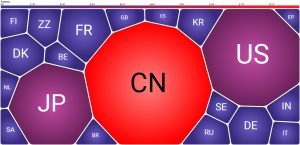USPTO Precedential Opinion Panel: Pending Petition Roundup
The Precedential Opinion Panel “POP” has had a number of petitions recently on key issues facing the Patent Trial and Appeal Board (“PTAB”). We’ve collected some of the most impactful below concerning the use of Applicant Admitted Prior Art (“AAPA”) and two focusing on the Fintiv factors for discretionary denial.
1. SolarEdge Techs. Ltd v. SMA Solar Tech. AG (IPR2020-00021)
In this proceeding, SolarEdge Techs. Ltd (“Petitioner”) challenged U.S. Pat. No. 8,922,048 owned by Solar Tech. AG (“PO”). The petition included three proposed grounds for obviousness, each relying on AAPA as the primary reference. In response, PO argued that the Petitioner may not use AAPA as the basis for an inter partes review (“IPR”) according to 35 U.S.C. § 311(b), which allows the use of only prior art patents and printed publications. In the Final Written Decision, the Board agreed that SolarEdge Techs. Ltd.’s use of AAPA was improper. The Board relied on the Guidance Memo (“Memo”) issued by the Director of the United States Patent and Trademark Office on August 18, 2020. While the Memo does not forbid using AAPA as a lead reference, the Board objected to Petitioner’s reliance on AAPA as the starting point for all three grounds of rejection. This suggests that future applicants’ use of AAPA to support claim limitations may be limited even if they employ additional statements to show potential improvements over the AAPA. Moreover, applicants’ reliance on prior art patents and printed publications as a “basis” may be disregarded if they use AAPA. Thus, this Decision may limit future applicants’ use of AAPA.
2. Cellco Partnership d/b/a Verizon Wireless v. Huawei Techs. Co., Ltd. (IPR2020-01352)
Here, Cellco Partnership d/b/a/ Verizon Wireless (“Petitioner”) challenged U.S. Pat. No. 8,995,253 owned by Huawei Techs. Co., Ltd. (“PO”). The Patent Trial and Appeal Board (“Board”) denied institution of the petition for inter partes review in reliance on the six-factor analysis set forth by Apple Inc. v. Fintiv, Inc., IPR2020-00019, Paper 11 (PTAB Mar. 20, 2020) (precedential).
The Board’s denial heavily weighed factor 3 (investment in the parallel proceeding by the court and the parties) and 5 (whether the petitioner and the defendant in the parallel proceeding are the same party) of the Fintiv analysis. In their petition and reply, Petitioner argued that factor 3 favored institution because of their diligence in filing the Petition within weeks of obtaining PO’s contentions and nine months before the statutory deadline. PO countered in their preliminary response, saying that Petitioner received the claim charts well in advance of filing its Petition. While the Board recognized Petitioner’s efforts, they were outweighed by the effort and resources invested in the parallel case, especially the district court’s claim construction. In their petition and reply, Petitioner also argued that factor 5 favored institution despite the identical parties across multiple proceedings. The Board rejected this contention on the grounds that Petitioner failed to explain why this factor should not weight against it.
In requesting POP review, the petitioner asserted that the Board’s analysis was at odds with previous decisions. For both factor 3 and 5, they identified unclear precedent based on Apple Inc. v. Maxell, Ltd., IPR2020-00204, PEAG, LLC v. VARTA Microbattery GmbH, IPR2020-01211, and Weatherford U.S., L.P. v. Enventure Global Tech., Inc., IPR2020-01648 where the similar analysis of factors 3 and 5 favored institution. Even further, for factor 3, they also cited to Apple Inc. v. Seven Networks, LLC, IPR2020-00156, PEAG, LLC v. VARTA Microbattery GmbH, IPR2020-01211, and Micron Tech., Inc. v. Good Kaisha IP Bridge 1, IPR2020-01007 as further clouding the precedent.
3. Canon Inc. v. Optimum Imaging Techs. LLC, (IPR2020-01321 & ‘1322)
In this IPR, Canon Inc. (“Petitioner”) challenged U.S. Pat. Nos. 7,612,805 and 8,451,339 owned by Optimum Imaging Techs. LLC (“PO”). The Board denied institution of the petition for inter partes review in reliance on the six-factor analysis set forth by Apple Inc. v. Fintiv, Inc., IPR2020-00019, Paper 11 (PTAB Mar. 20, 2020) (precedential).
The Board’s decision focused on expeditiousness under factor 3 (investment in the parallel proceeding by the court and the parties) of the Fintiv analysis. The Petition relied on new prior art discovered by Petitioner after the time had passed to file responses to invalidity contentions, which it had failed to find in previous searches. In their reply, Petitioner argued that they were expeditious in filing the petition only 2 months after discovering the new prior art. In their preliminary response, PO contended that Petitioner could have discovered the prior art with a reasonably diligent search. The Board dismissed Petitioner’s argument because Fintiv requires prompt filing after learning of the claims asserted, rather than discovery of the prior art. The Board explained that approving of Petitioner’s argument for basing expeditiousness on newly discovered prior art would encourage delaying the search for prior art.
This Decision potentially conflicts with at least one previous Board decision referenced in the POP request. Sotera Wireless, Inc. v. Masimo Corp., IPR2020-01019. In Sotera Wireless, the Board considered outside events affecting the timing of the petition, even though the time to file invalidity contentions had passed in the parallel litigation.
The Panel’s decision on all three of these petitions will be important to note moving forward for patent owners and PTAB petitioners alike. If you have any questions or concerns about how any of these matters may affect your intellectual property strategies moving forward, please reach out to us here.

